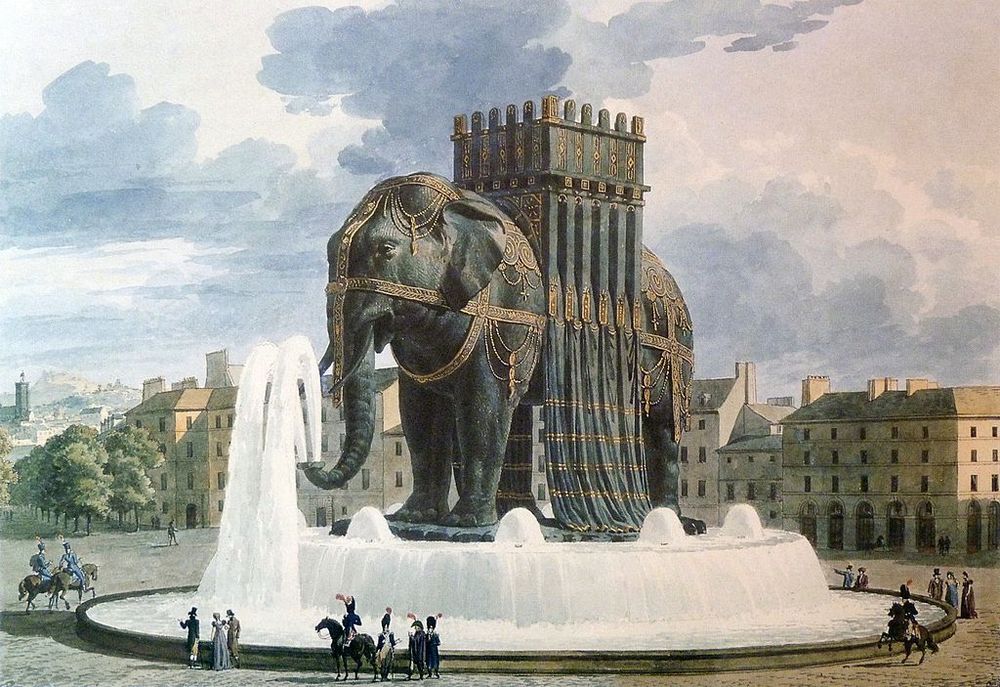Between 1814 and 1846, there stood a colossal plaster elephant in the heart of Paris, at the site of the former Bastille prison. For much of this time it presented a sorry spectacle. One tusk had fallen off, and the other was reduced to a powdery stump. Its body was black from rain and soot, and large cavities had opened in its torso where rodents, stray cats and vagrants took shelter. The plinth was overgrown by dandelions and thistles.
This was not the sight Napoléon Bonaparte had intended when he ordered the elephant built. It was supposed to be a monument to his victories, built out of bronze from melted canons he captured during his conquests. The elephant’s trunk would spout water, while one of its legs, measuring 6 feet across, would house a winding staircase leading to the howdah.

Elephant of the Bastille. Watercolour by architect Jean-Antoine Alavoine. Photo: Wikimedia Commons
© Amusing Planet, 2021.









Comments